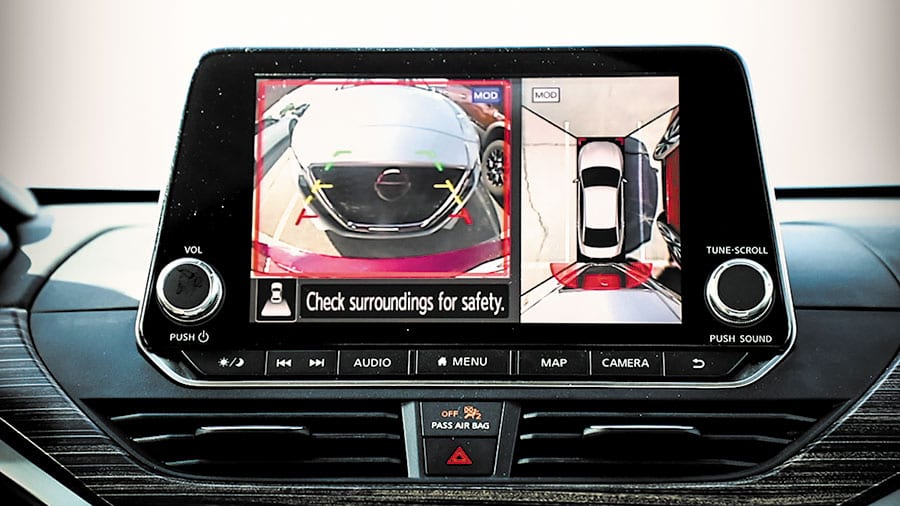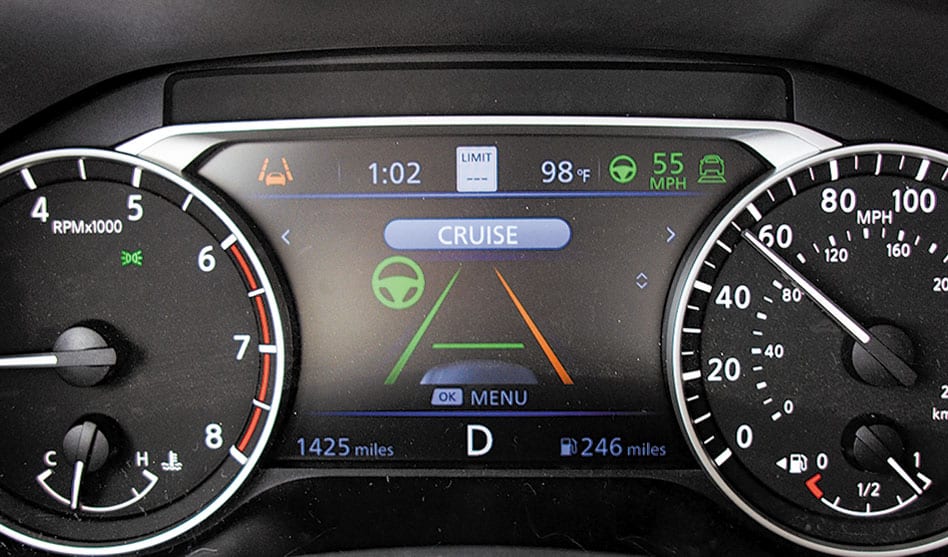Automated driving is becoming a reality. We preview some of the amazing advances in cartech
CASEY WILLIAMS | Auto Reviewer
autocasey@aol.com
We’ve been promised high-speed automated driving since the 1950s — GM event built concepts like the 1956 Firebird II — but it’s all been bloviating. Until recently. We’re finally on the cusp of letting computers do the driving. Features already on our cars are paving the way to automated driving. Soon, some of these tech innovations will sound as common as “anti-lock brakes,” “back-up camera” and “power windows.” Here are some of the latest technologies and how they work.
Blind-spot warning (BSW). Try to change lanes with a fellow motorist in the way and drivers will hear this. Using cameras, blind spot warning systems beep, flash lights near the sideview mirrors, and sometimes vibrate drivers’ seats to warn them of vehicles in their blind spots. The 2019 Ram pickup will even adjust its warning to account for the length of trailers behind it.
 Adaptive Cruise Control. ACC uses lasers, radar, cameras or a combination thereof to maintain a safe pre-set distance between vehicles and the ones in front of them. Some can even creep through stop-and-go traffic automatically. To maintain space, it can modulate throttle and brakes as required. The best systems, like Subaru’s EyeSight, places an image of the front vehicle in the instrument cluster to tell drivers, “Relax, I got this covered!”
Adaptive Cruise Control. ACC uses lasers, radar, cameras or a combination thereof to maintain a safe pre-set distance between vehicles and the ones in front of them. Some can even creep through stop-and-go traffic automatically. To maintain space, it can modulate throttle and brakes as required. The best systems, like Subaru’s EyeSight, places an image of the front vehicle in the instrument cluster to tell drivers, “Relax, I got this covered!”
Forward-collision Warning/Automatic Emergency Braking (FCW/AEB). Taking technology from adaptive cruise, FCW provides an audible or haptic warning that drivers need to pay attention before they hit an object in front of them — usually another vehicle, but also pedestrians and bicyclists. More advanced systems go ahead and apply the brakes if drivers don’t. Drive enough and a system like this will absolutely save your ass and the lives of others.
Rear cross-path detection (with auto braking). Lots of things happen very quickly when backing up: Cars speed by, people creep by and all kinds of toys can be left behind the bumper. No worries as many cars have their backsides covered as they detect objects and vehicles directly behind (and those that will soon be behind).
Simple versions beep warnings while sophisticated ones vibrate the driver’s seat and apply brakes — a real lifesaver in a moment.
Lane Departure Warning (LDW)/Lane Keep Assist (LKA). Both systems are designed to keep cars in their lanes and away from ditches or other traffic. LDW uses cameras, usually located behind the windshield, to track lane lines and give an audible alert when drivers cross without a turn signal. LKA goes further by braking inside wheels or giving the steering a gentle tug to encourage vehicles back on-track. It’s always nice to have a helping nudge.
Lane Centering Assist. Here’s where advanced safety systems veer towards true autonomous driving. Imagine driving down the road in adaptive cruise mode, with hands loosely on the steering wheel, and the car stays centered in its lane … even around curves. Drive vehicles as diverse as a Nissan Rogue or Mercedes S-Class and this is reality. I once drove two hours without really steering, braking or touching the throttle. Take your hands off, though, and the car gets pissy.

Cadillac’s Super Cruise. Going one step further, Cadillac’s Super Cruise lets drivers take hands off the wheel, though it doesn’t them let nap. Sensors watch eye movements to make sure drivers are looking ahead. Think of drivers as pilots on airliners with auto pilot engaged. Sure, the plane is flying itself, but pilots must always be ready to take control. Now available on the CT6 sedan, Super Cruise will roll out to most GM vehicles in the coming years.
Tesla’s Autopilot. The electric vehicle builder from California is very close to true autonomy. Using an array of radar, cameras, and ultra-sonic sensors, installed hardware will allow cars to maintain safe speed in traffic, center in lanes, change lanes without driver intervention, and change freeways automatically. It can even park itself and be summoned to/from your garage. These features will be introduced as regulatory approval is granted.
Taken apart, all of these systems are pretty amazing. But, put them together and they create the primordial stew that will become fully autonomous vehicles. Ten years from now, this will all seem as normal as summoning the universe from your telephone.
To discover what new vehicles have these advanced safety systems, check out Consumer Reports’ report at ConsumerReports.org/car-safety/cars-with-advanced-safety-systems/
















